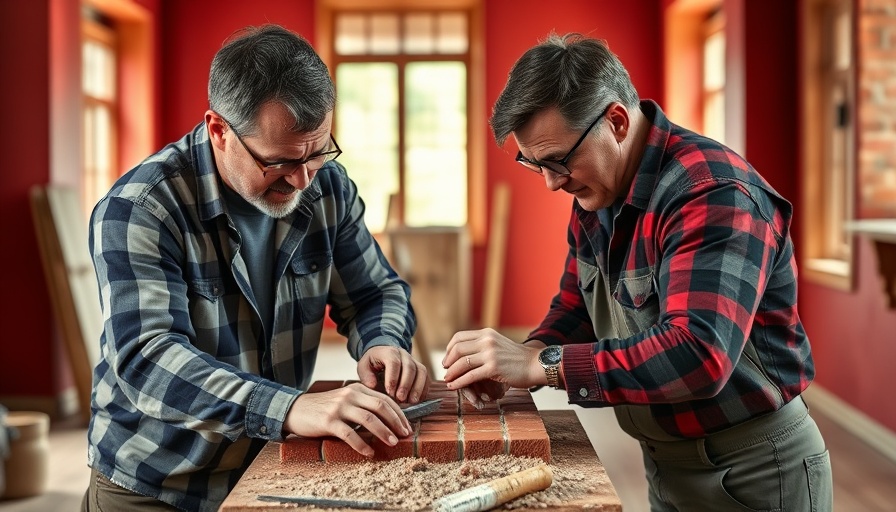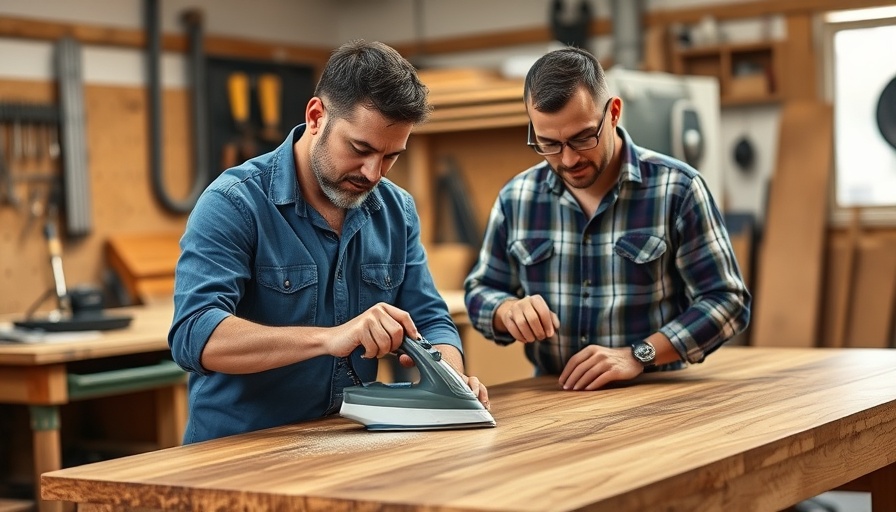
Understanding Brick Floors: The Importance of Maintenance
Brick floors are not only aesthetic but also durable. However, when mortar joints become loose or eroded, it becomes essential to act quickly to preserve their function and beauty. In the recent episode of Ask This Old House, Mark McCullough illustrates how even seemingly minor issues can be effectively addressed through a method known as spot pointing. Spot pointing allows homeowners to repair localized areas without the need for complete replacement, saving both time and money.
In 'How to Spot Point a Brick Floor | Ask This Old House', the discussion dives into effective repair techniques for brick floors, exploring key insights that sparked deeper analysis on our end.
What is Spot Pointing and Why is it Necessary?
Spot pointing refers to the selective repair of mortar joints specifically where damage is evident. Over time and exposure to elements, moisture can seep into these joints, causing the mortar to disintegrate. As Mark pointed out, when moisture isn't properly managed—like not wetting the bricks before applying new mortar—it leads to what is known as 'thirsty mortar.' This is why understanding the importance of moisture control is vital for maintaining the integrity of your brick floors.
The Steps to Repair Your Brick Floor Like a Pro
Following Mark's guide, the first step involves removing the loose or unmatched material carefully. Using a hammer and chisel, you can create the appropriate joint depth required for effective bonding. This vital step provides a foundation for placing the new mortar.
Next, cleaning the area—removing dust and debris—is crucial for ensuring the new mortar bonds well. Without this, moisture could be absorbed too quickly, repeating the cycle of erosion.
Finally, mixing mortar, incorporating a bonding agent, and applying it accurately fill the joints. Mark emphasizes the importance of being meticulous during this process to allow for seamless finishes that match the existing brickwork.
Skills Everyone Can Learn: DIY Tips for Homeowners
Embarking on DIY projects such as brick floor repair may seem daunting, but it's highly achievable with practical advice, like Mark's. Tools required are often common household items, and the process—while requiring some effort—doesn't involve advanced technical skills.
Residents looking to enhance their homes can consider additional steps after repairs, including applying a waterproof sealer to protect the newly repaired joints and prevent future damage from moisture. This simple practice can prolong the life of your investment.
Final Thoughts: The Value of Knowledge in Home Ownership
Learning how to spot point your brick floor is about more than just aesthetics—it's about taking ownership of your home and understanding the materials that make it whole. Areas of visible wear should prompt immediate attention to prevent more serious issues down the line. Repairing and maintaining brick floors can significantly contribute to your home's overall value and appeal.
As Mark noted, the process is not only rewarding but can also serve as an introduction to many future DIY projects!
For more qualities home repair techniques and insights, keep exploring and learning about the methods that protect your investments.
 Add Row
Add Row  Add
Add 




Write A Comment